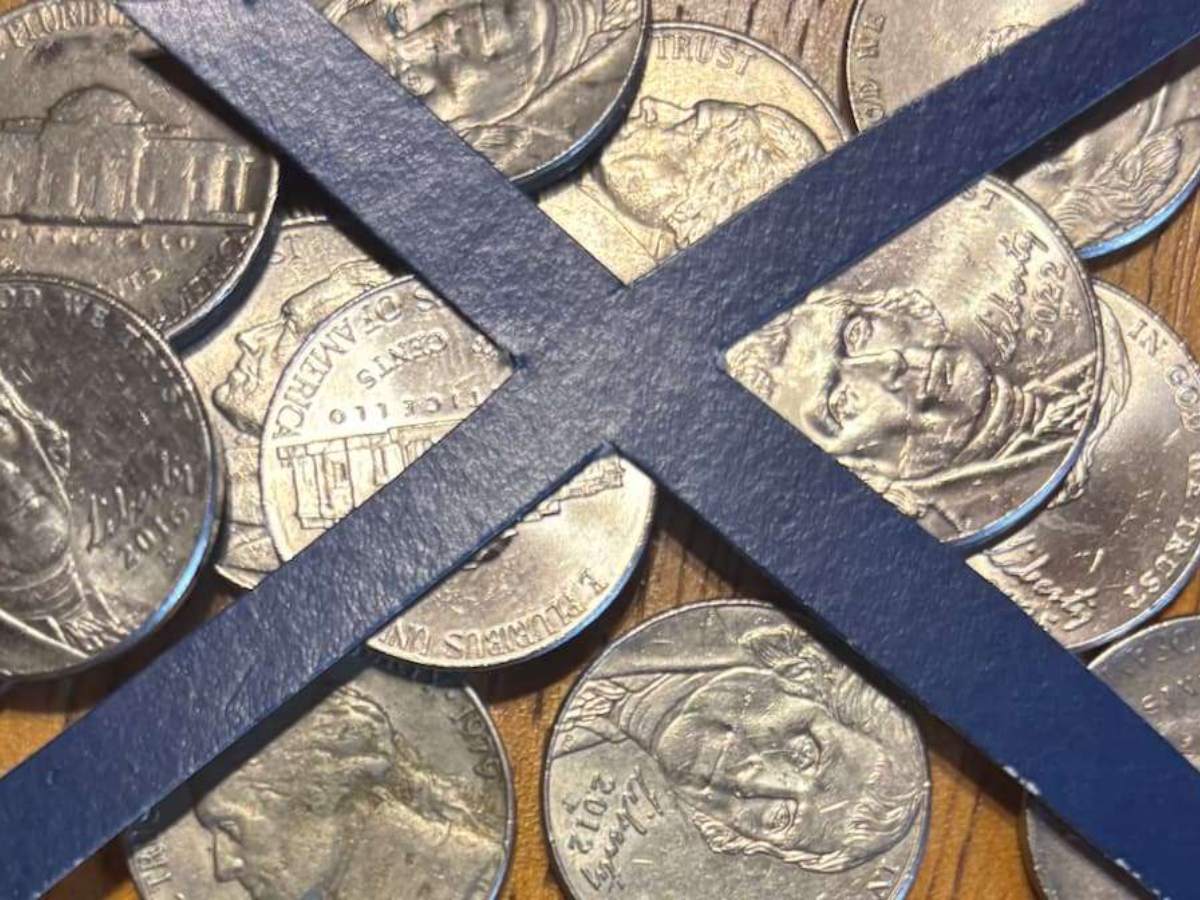Did you ever wonder how many coins come in a roll?
For example, do you know how many coins are in a roll of nickels? What about dimes? Or dollar coins?
Every denomination of coin roll contains a certain number of coins.
Number Of Coins Per Roll By Denomination

Starting with pennies, every standard roll of pennies contains exactly 50 coins. That’s right, 50 individual Abraham Lincolns nestled together into one roll. Each penny roll amounts to 50 cents.
Pretty straightforward, right?
Turning now to the topic of nickels in a coin roll, each standard nickel roll contains 40 coins – that’s 10 less than a roll of pennies.

This might raise a few eyebrows at first, but the reason behind it makes perfect sense. Nickels are larger in size compared to pennies. Rolling 50 nickels would necessitate a much longer roll — making it unmanageable and impractical. By sticking to the 40 coins per roll standard for nickels, both convenience and efficiency of storage are enhanced. This facilitates the process of stacking, transporting, and handling nickel rolls.
Regarding the value of a nickel roll, the math is rather simple. Each nickel is valued at 5 cents, so when you multiply it by 40, you’ll find that a standard roll of nickels is worth precisely $2 – that’s 4 times the value of a penny roll.
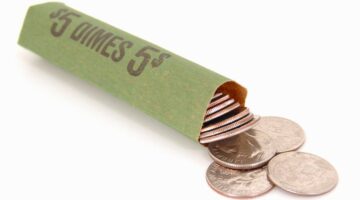
Steering the discussion from pennies and nickels, it’s time to delve into the world of the smaller, yet no less fascinating, pocket change — dimes.
When it comes to the number of dimes in a coin roll, the magic number is 50. That’s right, a standard dime roll curates exactly 50 dimes in the United States. The value of one dime roll, therefore, comes up to a neat $5.
Beautiful and brilliant, isn’t it? 50 shiny dimes make a roll – all neatly wrapped up into a $5 bundle of history and pocket change.
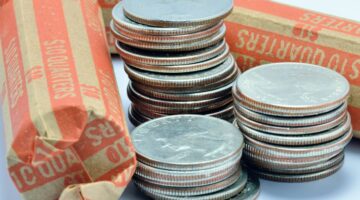
As we dive deeper into the world of U.S. coin rolls, let’s talk about the U.S. quarter.
With quarter rolls, the magic number is 40. This allows for a neatly rounded, easily calculable face value of $10 for each roll of quarters.
Moving along from the dimes and quarters, let’s get a better understanding about rolled halves and dollar coins.
In coin rolling, the standard quantity of half-dollar coins in a roll is 20. For a glance at the mathematics, 20 halves provide an exact total face value of $10.
With dollar coin rolls, things are a bit different. These are usually packed in rolls of 25 coins, which gives us a total monetary value of $25 per roll.
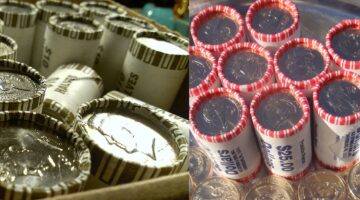
The Standardization Of U.S. Coin Rolls
Coin roll quantities are set by the United States Mint.
These quantities are standard across the country — so a roll of dimes in New York City contains the exact same number as a roll of dimes in Los Angeles.
Standardization makes life a lot more convenient for the banks, stores, and of course coin collectors like us.
That said, not all rolls of coins contain the exact same number of coins.
Why is that?
It’s to make the handling of coin rolls more manageable.
You see, when filled with coins, all U.S. coin rolls end up being approximately the same length — from folded end to folded end.
This makes it easier to manually stack, sort, transfer, and handle U.S. coins in rolls. If some rolls were longer and some were shorter, then dealing with wrapped coins would be impractical — especially at banks and retail stores.
Why Do We Use Coin Rolls Anyway?
Coin rolls are stacked bundles of coins worth a certain amount of money in face value.
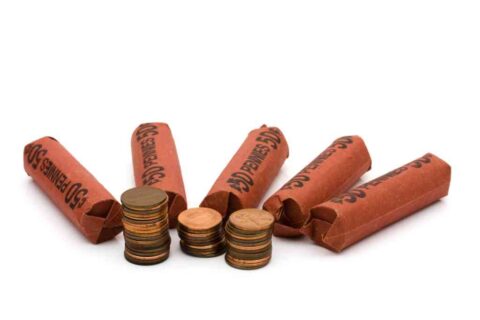
They’re used to help organize large amounts of loose change and are the preferred method for banks and merchants to receive and dispense big quantities of coins.
Rolls of coins are also favored by coin collectors who enjoy searching through circulated coins to look for old coins, rare coins, error coins, and other types of interesting and unusual U.S. coins.
I enjoy looking through rolls of coins because it’s generally easier to find old and rare coins when I’m looking through rolls of coins rather than picking through individual coins that come and go through my hands as pocket change.
I also like to roll coins up in wrappers before taking the change from my coin jar to my bank — it’s easier to deposit them this way at the bank. (Most banks actually require that coins be given to them in rolls these days.)
Whether I look at them through the eyes of a numismatist or as a typical coin-spending American, coin rolls are an important part of commerce, and they’re essential to helping the exchange of physical currency in commerce.
Without rolling, loose coins can be quite a headache to handle in larger quantities — significantly slowing down transactions and increasing the risk for errors in counting.
MUST READ: Looking Through Rolls Of Pennies Can Be Rewarding… And Fun For Collectors!
History Of Coin Rolls
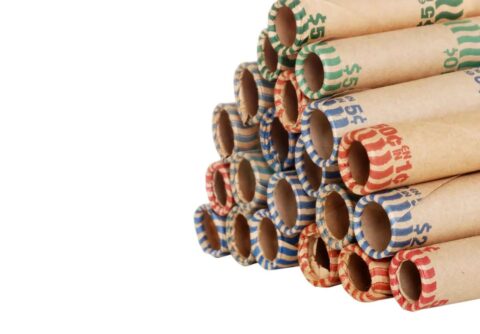
Numismatists can’t determine exactly when the first coin rolls emerged.
Some theories suggest rolls of coins in simple paper wrappers may have first been employed by banks hundreds of years ago.
Possible evidence for early coin rolls can even be found in old shipwrecks containing coins. In many cases, shipwreck coins are found in small stacks — suggesting they were originally rolled in paper wrappers (before the paper disintegrated underwater).
Automated coin wrapping mechanisms came into widespread use during the early 20th century. The most popular of these was the Batdorf coin package wrapper, which was granted a patent in September 1913.
With the rise of automated coin wrappers, coin rolls became much more common.
Original Bank Wrapped roll coins (also called OBW coins) are those that are still in their original bank rolls.
OBW coin rolls from the first half of the 20th century on which the bank name is visible are often worth more money than OBW coins in plain wrappers.
Let’s Summarize…
Here’s a summary of the different types of coin rolls — including the number of coins that each wrapper should contain, and the total face value for the coins in each roll:
| Coin Roll | Number of Coins | Roll Value |
|---|---|---|
| Penny Coin Roll | 50 | $0.50 |
| Nickel Coin Roll | 40 | $2.00 |
| Dime Coin Roll | 50 | $5.00 |
| Quarter Coin Roll | 40 | $10.00 |
| Half Dollar Coin Roll | 20 | $10.00 |
| Large/Silver Dollar Coin Roll | 20 | $20.00 |
| Small Dollar Coin Roll | 25 | $25.00 |
| $2.50 Gold Quarter Eagle Coin Roll | 40 | $100.00 |
| $5 Gold Eagle Coin Roll | 40 | $200.00 |
| $10 Gold Eagle Coin Roll | 50 | $500.00 |
| $20 Gold Eagle Coin Roll | 25 | $500.00 |
The Bottom Line

In the end, knowing how many coins are in a coin roll – by denomination – is just one of those essential bits of info that you learn along the way when you do a lot of coin roll searching.
Like the comforting clink of coins or the sight of a perfectly wrapped coin roll, it’s the simple things that make the world of numismatics that much richer.
Happy collecting, folks!


